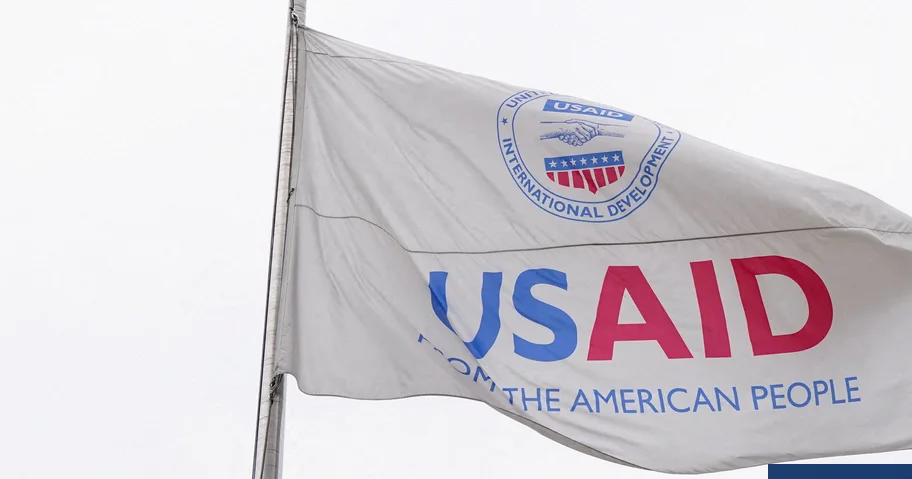Donald Trump’s administration has confirmed plans to merge the US international aid agency USAid into the state department in a major revamp that would shrink its workforce and align its spending with Trump’s priorities.
The secretary of state, Marco Rubio, declared himself the acting administrator of the agency and employees have been locked out of its Washington DC headquarters, while others have been suspended.
Trump has entrusted Elon Musk, the billionaire heading his drive to shrink the federal government, to oversee the project. On Sunday, Trump said USAid had “been run by a bunch of radical lunatics, and we’re getting them out”, while Musk called it “a criminal organization” without providing any evidence and said it was “time for it to die”.
What is USAid and how is it funded?
USAid was established in 1961 by Democratic president John F Kennedy at the height of the cold war with the aim of better coordinating foreign assistance, already a key platform of US foreign policy in countering Soviet influence.
It now administers about 60% of US foreign assistance and disbursed $43.79bn in the 2023 fiscal year. According to a Congressional Research Service (CRS) report this month, its workforce of 10,000, about two-thirds of whom serve overseas, assisted about 130 countries. USAid is funded by Congress, based on administration requests.
The CRS said USAid helps “strategically important countries and countries in conflict; leads US efforts to alleviate poverty, disease, and humanitarian need; and assists US commercial interests by supporting developing countries’ economic growth and building countries’ capacity to participate in world trade”.
Its top aid recipients in 2023 were Ukraine, Ethiopia, Jordan, Democratic Republic of Congo, Somalia, Yemen, Afghanistan, Nigeria, South Sudan and Syria.
How much does the US spend on aid and how does it compare with other countries?
While the US gives more official government aid than any other country, its contribution as a percentage of national income is at the bottom of the list for wealthy countries in 2020, according to figures from the Organization for Economic Co-operation and Development.
In 2023, Norway topped the list at 1.09% of gross national income, while the US lagged at 0.24%, along with Slovenia, the Czech Republic and Spain.
In recent years, according to a Brookings Institution report from September, US aid spending has been about 0.33% of gross domestic product. It peaked at 3% of GDP in the 1950s with the Marshall plan program to rebuild Europe after the second world war. During the cold war, it ranged from 1% to a little less than 0.5%.
Nevertheless, in the 2023 fiscal year, the US as a whole disbursed a total of $72bn in assistance worldwide, and about 42% of all humanitarian aid tracked by the United Nations in 2024. The funds covered everything from women’s health in conflict zones to access to clean water, HIV/Aids treatments, energy security and anti-corruption work.
Why does Trump oppose the agency’s work?
In an executive order on 20 January, Trump announced a 90-day pause in most of foreign aid, saying the “foreign aid industry and bureaucracy are not aligned with American interests and in many cases antithetical to American values.
“They serve to destabilize world peace by promoting ideas in foreign countries that are directly inverse to harmonious and stable relations internal to and among countries,” it said.
In a memo, the administration urged USAid workers to join the effort to transform how Washington allocates aid in line with Trump’s “America First” policy and threatened disciplinary action for ignoring the orders. The actions rang alarm bells from refugee camps in Thailand to Ukraine war zones with humanitarian organizations and UN agencies saying they could face drastic curbs on their ability to distribute food, shelter and healthcare.
A source with knowledge of USAid’s workings said folding it into the state department would be a big departure. USAid has in the past been able to provide humanitarian assistance to countries with which Washington has no diplomatic relations, including Iran and North Korea. This has sometimes helped build bridges, the source said, and the benefit could be lost if its operations were purely tied to political objectives.
Is support for foreign aid bipartisan?
According to Brookings, Democratic administrations and lawmakers have historically been more supportive than Republicans, but every postwar president, whether Democrat or Republican, has been a strong proponent of foreign aid – apart from Trump.
It noted that proposals by the first Trump administration to cut the US international affairs budget by a third were rejected, as were attempts to delay congressional consideration of supplemental foreign aid legislation in 2024. And in a bipartisan vote in June, 80% of the members of the Republican-led House of Representatives rejected an amendment to eliminate foreign assistance from the fiscal 2025 budget.
